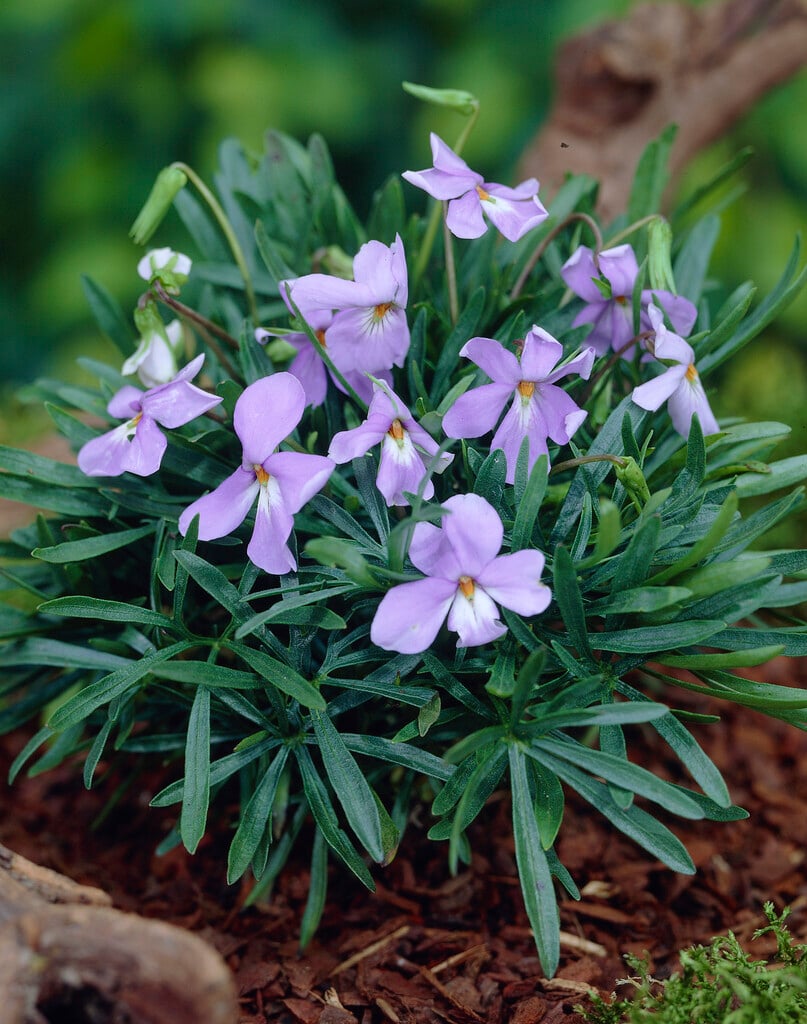Viola pedata
birdfoot violet
A small, semi-evergreen perennial, to around 5cm high, with leaves divided into narrow, linear lobes. In late spring and early summer, produces pale violet, white or sometimes bicoloured flowers, with yellow centres and widely spaced petals

Buy this plant
Size
Ultimate height
Up to 10cmTime to ultimate height
1–2 yearsUltimate spread
0–0.1 metreGrowing conditions
Moisture
Well–drainedpH
Acid, NeutralColour & scent
| Stem | Flower | Foliage | Fruit | |
| Spring | Purple White | Green | ||
|---|---|---|---|---|
| Summer | Purple White | Green | ||
| Autumn | Green | |||
| Winter | Green |
Position
- Full sun
- Partial shade
Aspect
East–facing or South–facing or West–facing
Exposure
Exposed or Sheltered Hardiness
H7Botanical details
- Family
- Violaceae
- Native to GB / Ireland
- No
- Foliage
- Semi evergreen
- Habit
- Clump forming
- Genus
Viola can be annuals, biennials or deciduous or evergreen perennials, with simple or pinnately lobed leaves and 5-petalled flowers of characteristic shape
- Name status
Correct
- Plant range
- E North America
How to grow
Cultivation
Needs a well-drained growing medium; thrives in sandy loam. Prefers full sun but will tolerate light shade. Best grown in an alpine house or container
Propagation
Propagate by seed
Suggested planting locations and garden types
- Patio and container plants
- Conservatory and greenhouse
Pruning
No pruning required
Pests
Generally pest-free, but may be susceptible to slugs, snails, aphids and glasshouse red spider mite
Diseases
May be susceptible to crown rot
Get involved
The Royal Horticultural Society is the UK’s leading gardening charity. We aim to enrich everyone’s life through plants, and make the UK a greener and more beautiful place.